The A380 aircraft, a giant in the air, is as bright as it is at the beginning, and as sad as it is at the end.
In March this year, the final fate of two retired A380 aircraft of China Southern Airlines was settled. Jet Midwest, which specializes in aircraft asset trading, maintenance, parts supply and other businesses, announced that it had taken over two aircraft and would disassemble one of them and resell the disassembled parts.
According to the monitoring data of plane spotters, on February 24, the two planes took off from Baiyun Airport in Guangzhou, crossed the Pacific Ocean, stopped at Victorville airport in California, and finally arrived at Mojave Desert, the "aircraft cemetery" in southeastern California.
The media once reported that the five A380 aircraft owned by China Southern Airlines, including the two A380s bought by jet Midwest, will be retired before the end of this year.
This is not the first time the A380 has retired. As early as 2017, an A380 operated by Singapore Airlines was scrapped. In 2020, Air France also announced the retirement of its A380 fleet, two years ahead of schedule. In addition, Emirates and Qantas have partially or completely retired and dismantled A380.
A380 is a super large long-range wide body aircraft with four engines (commonly known as "four engines") developed and produced by Airbus in Europe. It is also the world's largest civil aircraft with the largest passenger capacity so far. An aviation expert interviewed by the reporter believes that although the glorious era of the four engine airliner is drifting away, this is not a simple bad thing. Because technology is progressing, airliners also need to be updated and iterated.
"Although the A380 is not a commercial success, as an excellent product, it still leaves a lot of valuable experience in technological innovation. The reasons for its failure and lessons are worth pondering." Yang Min, a researcher of China Aviation Industry Development Research Center, said.
Born in the sky
"The development of the A380 started very early, dating back to the 1980s. Airbus officially announced the project at an international air show in 1990." Wangyuanyuan, researcher of China Aviation Industry Development Research Center, said in an interview with reporters.
In the 1970s, the Boeing company of the United States launched the representative Boeing 747, which is the first large four engine wide body long-range aircraft in the world. At that time, global travel demand soared, and international shipping had unlimited potential. Boeing 747 not only dominates the air market share, but also makes huge profits for the airlines it serves.
As a strong competitor of Boeing, Airbus, eager to prove its strength and seize the market, launched the A380 project. Airbus' development concept at that time believed that the best way to improve air traffic congestion in the 21st century was to increase transport capacity, and concluded that in the future world, civil aircraft would continue to develop towards large-scale. After considering various design schemes, Airbus finally decided to adopt the full double-layer design. After continuous fine-tuning, the A380 project was finalized in 2001.
On january18,2005, the first A380 prototype was first unveiled in Toulouse, France, and completed its first flight on April 27 of that year. In 2007, the first A380 was officially delivered to Singapore Airlines. On October 25 of the same year, the A380 flew from Changi International Airport in Singapore to Sydney International Airport in Australia for the first time.
Public information shows that the A380 has two decks and can carry more than 840 passengers when seats are arranged according to the highest density. Some of the A380s, under the three-level configuration of "first class - business class - economy class", also installed showers on the aircraft for the first time for first-class guests, which caused a great sensation in the market at that time.
"A380 is a milestone in aviation technology." The above-mentioned aviation experts made such comments.
According to experts, the A380 adopts the most advanced technology that can be used at the beginning of this century. For example, equipped with four Trent 900 turbofan engines from RORO, the noise level was nearly half lower than that of similar products at that time.
In addition, the A380 also uses advanced light materials to manufacture major large structural members. Public information shows that composite materials account for 25% of the weight of aircraft structures, of which carbon fiber reinforced plastics account for 22%. Due to the reasonable use of advanced materials, A380 effectively reduces the body weight, fuel consumption, exhaust emissions, etc.
The A380 also has many innovative systems. For example, the avionics data communication system used for inter system communication can promote the unification of data and speed up the transmission speed; The automatic braking off runway function can optimize the use of energy when the aircraft lands, reduce the time of occupying the runway, and so on.
During the research and development of A380 aircraft, Airbus applied for more than 380 technical patents for this new double decker aircraft.
Many people in the civil aviation industry agreed in the interview that the launch of A380 is a major initiative to change the aviation industry. It is designed for the long-range "hub hub" radial mode route operation. This also enables airlines to develop and redefine the luxury on-board passenger experience.
The so-called "hub hub" radial mode means that passengers arrive at the hub airport first by small aircraft, fly from the hub airport to another hub airport, and then transfer to the destination by small aircraft.
According to the reporter's statistics, the airlines operating A380 internationally include Emirates, Singapore Airlines, Australian Airlines and Lufthansa Airlines. The common characteristics of these companies are that they mainly operate international routes and operate many transit routes backed by large international hubs, which is in line with the positioning of A380 hub long-distance routes.
On October 17, 2011, the A380 aircraft officially carried out the first passenger flight mission in Chinese Mainland. China Southern Airlines, to which it belongs, became the seventh airline in the world to operate Airbus A380 and the only airline in Chinese Mainland to own Airbus A380. At that time, China Southern Airlines' A380 mainly flew domestic routes from Guangzhou to Beijing.
In 2013, China Southern Airlines put the A380 into the operation of international routes. As mentioned in the financial report at that time, "A380 and other flagship aircraft will be put into key international markets in Europe and Oceania".
? on June 19, 2017, Airbus A380 took part in the flight demonstration at Bourget airport in the suburbs of Paris, France. Photographed by Chenyichen, reporter of Xinhua News Agency
be born out of one's time
Although it was born with its own light, the A380 failed to tell a good business story, especially the unexpected changes in the economic situation, which made it helpless.
In 2007, when the A380 was officially put into commercial use, the global financial crisis broke out and the international aviation market shrank significantly. This also forces airlines to choose smaller and more streamlined models, such as Boeing 787 and Airbus A350.
Lin Zhijie, a civil aviation expert, once analyzed that Airbus believes that the future international route is a hub mode, and the long-distance routes between global hubs need a big Mac such as A380, while Boeing believes that the future is a direct flight mode from second tier city airport to second tier city airport, and there is no need to transfer at the hub airport. "Even in the hub mode, the A380 is too big. How many such markets can fill more than 500 seats?"
Large, not only deviated from the direct flight desire of passengers, but also failed to fully consider the operating benefits of airlines and the compatibility of airports.
How big is it? The A380 has a wingspan of 80 meters and a maximum takeoff weight of 575 tons. Emirates Airlines, a major customer with 47% of the world's A380s, had been worried about ordering more A380s and lacked storage space at Dubai International Airport.
Large, which also puts forward special requirements for the operation of A380.
First, the runway length must reach 4f level. "4" means that the runway length should be more than 1800 meters, "F" means that the wingspan of the aircraft that can take off and land is greater than or equal to 65 meters, and the outer track width of the main landing gear is greater than or equal to 14 meters.
Up to now, there are 19 4f airports in mainland China. "To operate A380, not only the destination airport needs level 4f, but also the alternate airport needs the same level, which greatly limits the scope of its flight." Wang Yuanyuan said. If A380 operators want to develop routes, they must first face the problem of airport compatibility.
Secondly, the A380 needs special airport support. For example, use special parking spaces with three corridor bridges. Generally, the capacity of 500 seats also makes the boarding time of passengers much longer than that of other models. The A380 tractor must be the largest in the world, otherwise it cannot be delivered to the scheduled aircraft position. The service vehicle for transporting luggage and the drinking water vehicle for adding water also have to be "expanded", and the deicing vehicle should also be specially configured to meet the needs of its two decks
"For the A380, every aspect of the airport needs to be improved." A staff member of Beijing Capital International Airport told reporters.
Thirdly, the A380 is larger and involves higher airport use fees, takeoff and landing fees, etc. According to the aforementioned sources from the capital airport, the takeoff and landing fees of the A380 are twice that of the A330 and nearly 10 times that of the Boeing 737. In addition, the fuel consumption and maintenance cost of A380 four engines are significantly higher than those of twin engines.
The aviation industry has a famous conclusion about the A380: "as long as you can fill it up, you can make more money than you can imagine; but on the contrary, if you don't have a suitable route, the A380 is a gold eating monster."
In addition, people in the aviation industry have said that the daily utilization rate, load factor and other indicators can reflect the operating conditions of class I aircraft. "Generally speaking, the aircraft load factor of 65%-75% can basically be profitable, but the A380 has a larger volume, involves higher airport use fees, takeoff and landing fees and other fees, and the actual load factor needs to reach 75%-80%."
Facts have proved that the large passenger capacity of the A380 not only makes it difficult for airlines to obtain more revenue, but also greatly increases the operating costs. So far, only a few companies, such as Emirates, have made profits from the aircraft.
In the years before China Southern Airlines introduced the A380, the route could only go back and forth at domestic hub airports such as Beijing, Shanghai and Guangzhou, and China Southern Airlines has been paying for its losses. Even though the intercontinental routes from Guangzhou to the United States and Australia were later opened, the situation of A380 "devouring gold" has not changed because of high passenger demand and high fuel consumption.
An audit result on the financial revenue and expenditure of China Southern Airlines Group in 2014 released in 2016 mentioned that the utilization rate of the five Airbus A380 aircraft introduced by China Southern Airlines Group in 2011 was low and the operation continued to suffer losses, which increased the pressure on the enterprise's operation.
? on September 11, 2012, the reporter appeared in front of the A380-800 aircraft displayed by Emirates Airlines at the air show in Berlin, Germany. Photographed by Ma Ning, reporter of Xinhua News Agency
The sudden outbreak made the A380 operation even worse. The weakening demand for international shipping means that it is difficult to fill the passenger capacity of double decker aircraft, so many airlines have announced that they have grounded or even eliminated the A380.
Air France plans to phase out its fleet of 10 A380 aircraft, and Qatar Airways plans to retire its A380 aircraft when they reach 10 years of age. Other airlines operating this aircraft, such as British Airways, Korean Airlines and Australian Airlines, have not yet made a clear decision on the fate of this super Jumbo aircraft, but have suspended expensive on-board business and advanced facility upgrades.
On balance, China Southern Airlines also announced that it would retire the A380, which has been operating for 10 years. Generally speaking, the service time of civil aircraft is generally 25 to 30 years.
A netizen's comment may tell the truth: "China Southern Airlines was once proud of owning the A380, but it has become the biggest burden of the company."
The curtain fell on gloomily
In the Great Gatsby, it is said that we have been rowing and fighting against the waves, but were finally washed back to our past.
When the A380 encountered market difficulties, the aero-engine technology made great progress. Since then, twin engine aircraft with longer range and lower fuel consumption, such as Boeing 787 and Airbus A350, have emerged one after another, which has brought a huge blow to the A380. In this case, airlines are not willing to take the risk of insufficient attendance to operate the expensive super large aircraft A380.
Specifications
General Characteristics
- Predecessor XJ-380-800
- Created On Android
- Wingspan 254.0ft (77.4m)
- Length 243.7ft (74.3m)
- Height 150.4ft (45.8m)
- Empty Weight N/A
- Loaded Weight 112,664lbs (51,103kg)
Performance
- Power/Weight Ratio 3.71
- Wing Loading 32.2lbs/ft2 (157.4kg/m2)
- Wing Area 3,495.6ft2 (324.8m2)
- Drag Points 22246
Parts
- Number of Parts 704
- Control Surfaces 5
- Performance Cost 3,361


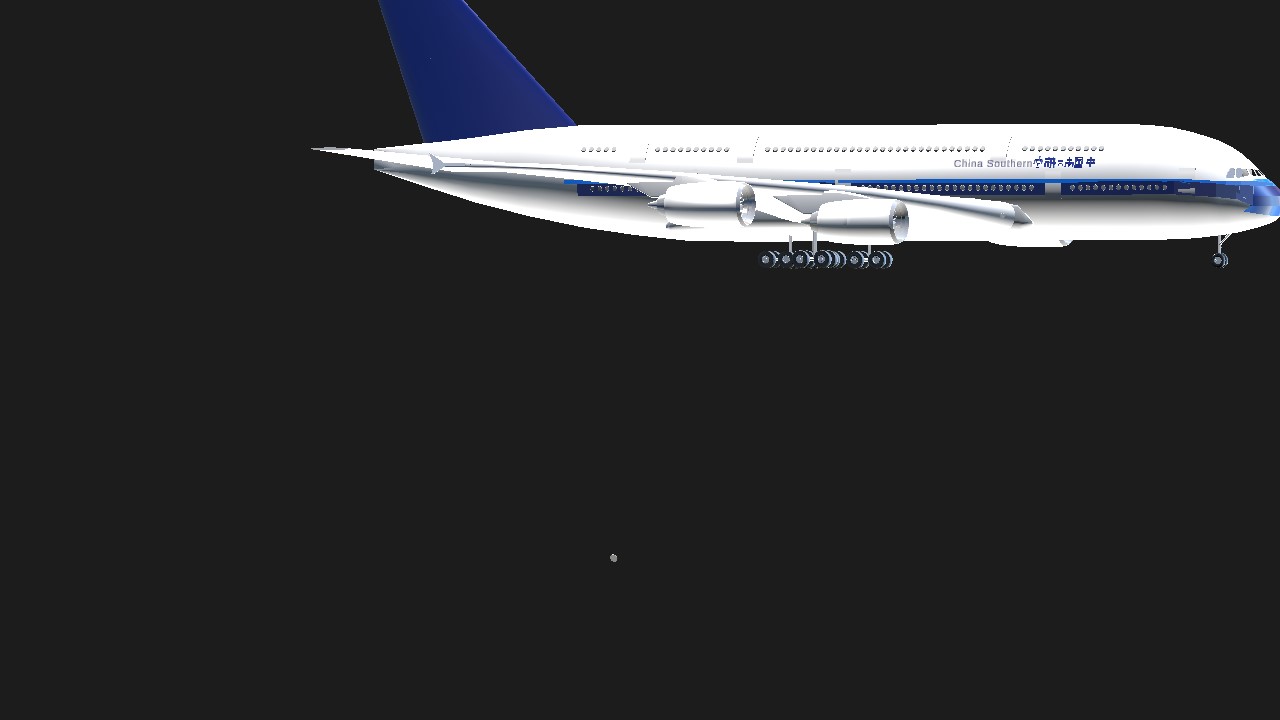
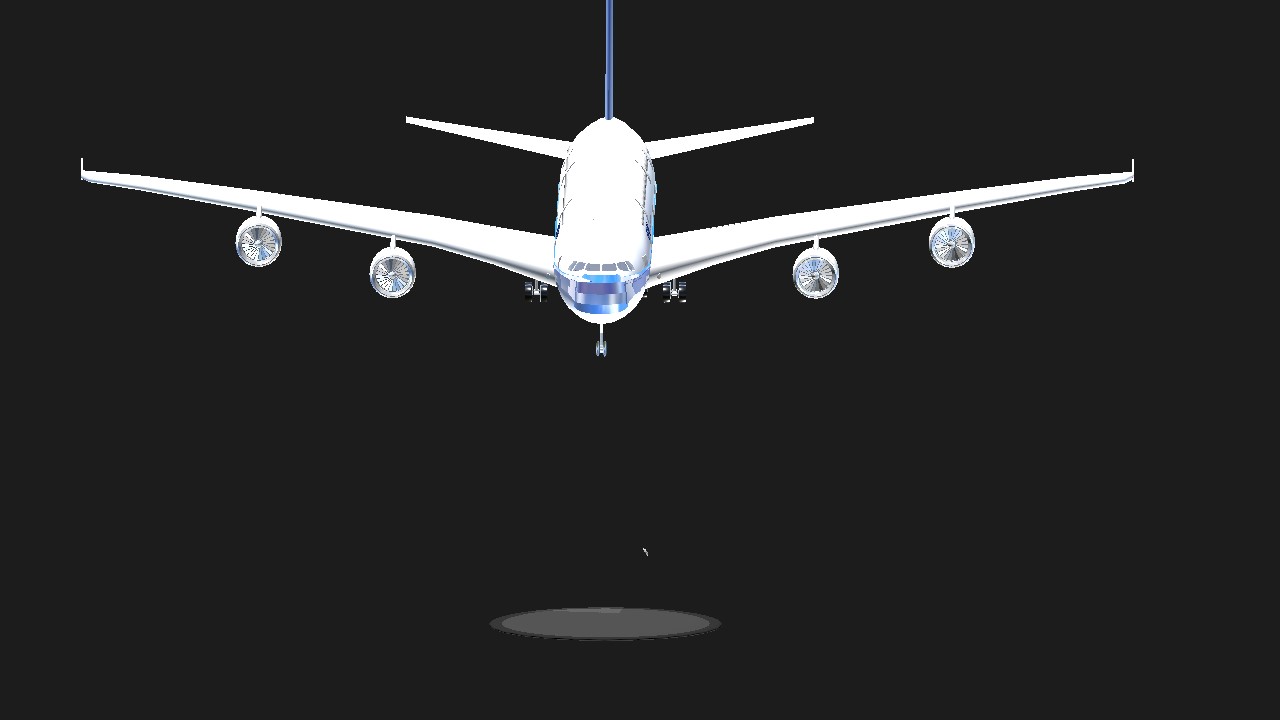
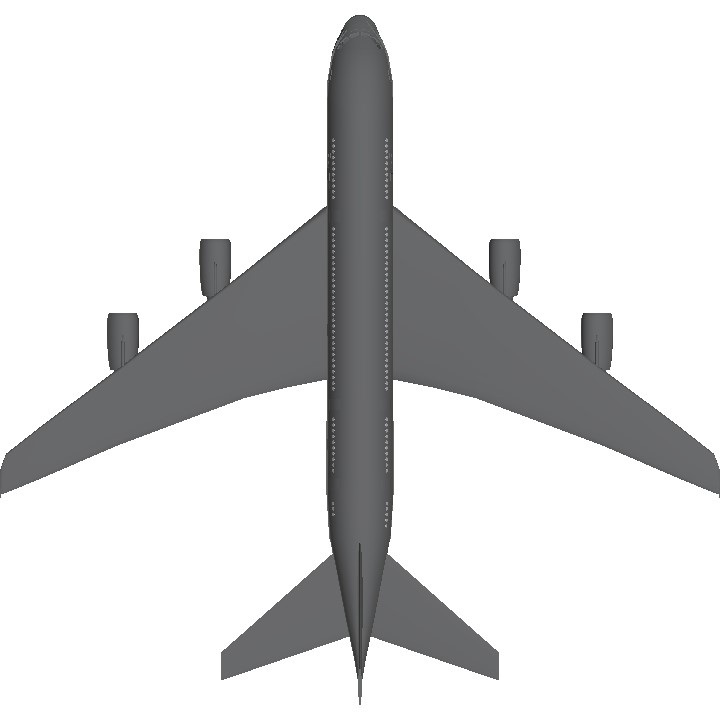
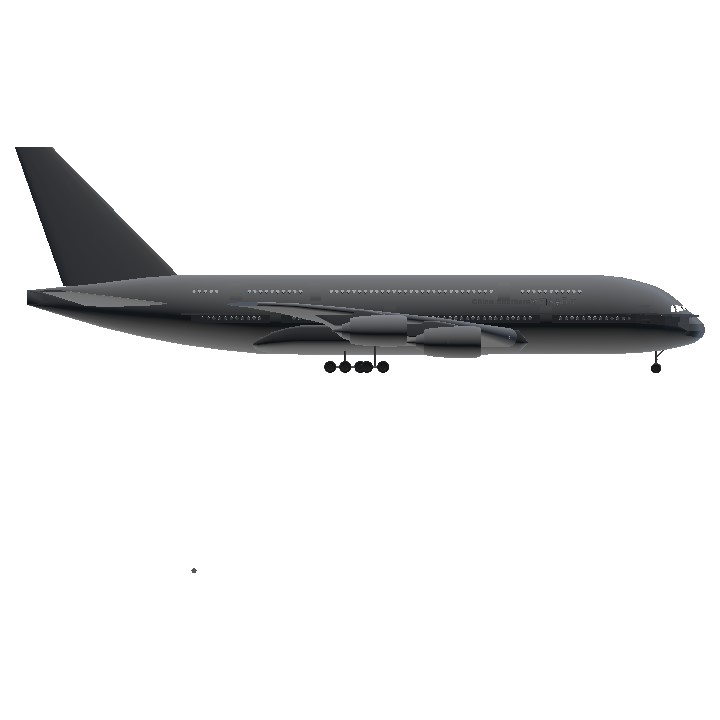
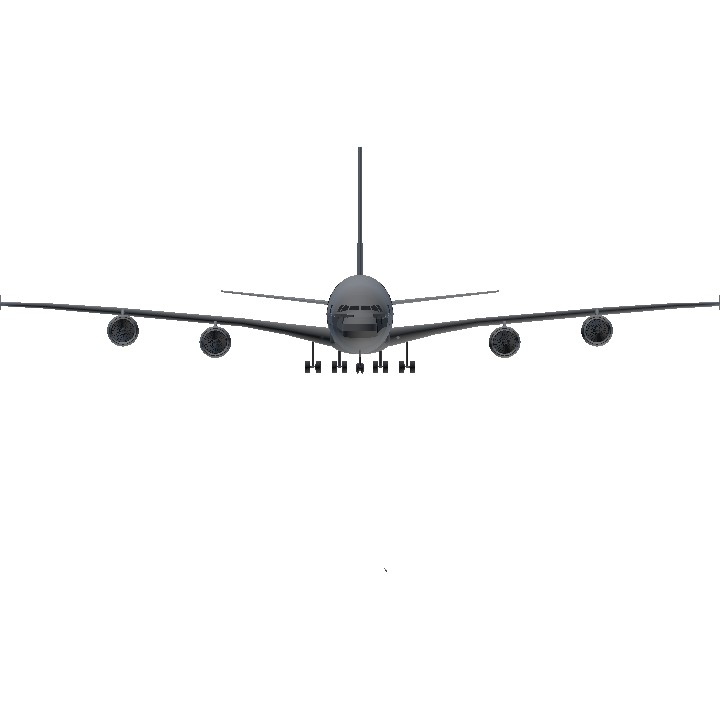
noice!
Nice one